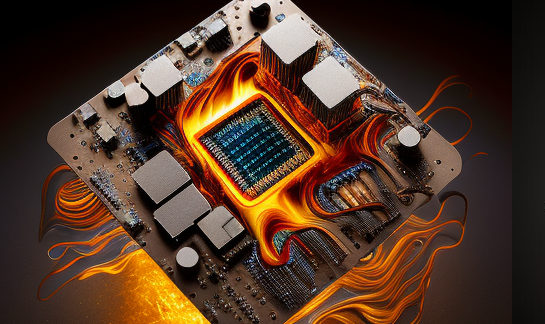The sirens are wailing in Santa Clara.
- It may be the CEO of Rolls Royce who is evoking the “burning platform” meme from Nokia in 2011 (see here) but it looks to me like Intel may be in even worse shape.
- Intel reported a truly awful set of numbers, declined to guide for 2023 and appears to be losing market share left right and centre.
- Furthermore, with a massive fab building program to pay for and negative cash flow, industry observers are beginning to wonder how Intel will manage.
- Q4 2022 revenue / Adj-EPS were $14.0bn (down 32% YoY) / $0.10 (down 92% YoY) which was below estimates of $14.5bn / $0.20 and the news deteriorated from there.
- Q1 2023 revenues are expected to be $10.5bn – $11.5bn with gross margins at 39% and a loss of $0.15 in adjusted EPS.
- This is far adrift from consensus which was hoping for $14.0bn in revenues, gross margins of 45.5% and $0.25 in adjusted EPS.
- Intel is suffering from inventory corrections like much of the rest of the industry where device makers panic-bought parts that they thought they would have difficulty buying only to find out that reality has reasserted itself post-pandemic and they don’t need to carry so much inventory.
- However, at the same time, Intel is also losing market share in the server business to AMD which is something that it can ill afford as it needs the cash to invest in getting its manufacturing back on track.
- Manufacturing was the one piece of good news in these numbers.
- There has been widespread scepticism that Intel would manage to migrate through 5 nodes in 4 years, but this migration remains on track.
- Critically, Intel knows exactly how it is going to affect this transition which if execution continues will allow it to close the gap to TSMC and Samsung.
- The real problem is whether Intel has the resources to pay for it as leading-edge fabs cost around $25bn each and Samsung and TSMC are outspending Intel by a factor of nearly 2 to 1.
- Profitability is also in free fall due to competition from AMD as well as payments for factory capacity that had been booked but is no longer needed due to demand weakness.
- Intel used to sport 65%+ gross margins every quarter with the street getting hung up on tiny moves one way or the other.
- Gross margins are now below 40% which with its dominant market position now under real pressure, I wonder if we will ever see 65% again.
- The final problem Intel has to face is the rise of the reduced instruction set (RISC) as Apple has demonstrated that one can make excellent devices with huge performance and good battery life using Arm rather than x86.
- This calls into question the long-term viability of the x86 architecture which, if now obsolete, means that Intel’s future is as a foundry and no more.
- Foundry is easier said than done because one has to be able to manufacture chips for anyone that needs them rather than just for oneself which is much harder than it sounds to do at good yields.
- If x86 is obsolete, then this further transition will be required in order for Intel to retake its place at the pinnacle of semiconductor manufacturing which will add further to the complexity and difficulty of the turnaround.
- I think there is a good chance that Intel will need more capital which is why I think that Intel needs to cut the dividend and sell all of its shares of Mobileye without delay.
- While Mobileye is going gangbusters right now, I think that it has lost a lot of share for the 2025 / 2026 vehicle model years but this will not show up in the numbers for another 2 years or so.
- This gives Intel 24 months to dispose of its stake at close to double what it paid for it before the share price collapses.
- I have always thought that Intel at 10x PER offers a good risk-reward trade-off but I have no idea at what price 10x PER is on offer.
- Intel could post negative EPS this year meaning that there is very little to support the share price from a valuation perspective at the moment.
- The shares are back to $27, and I think they could go lower as there may very well be more bad news to come.









